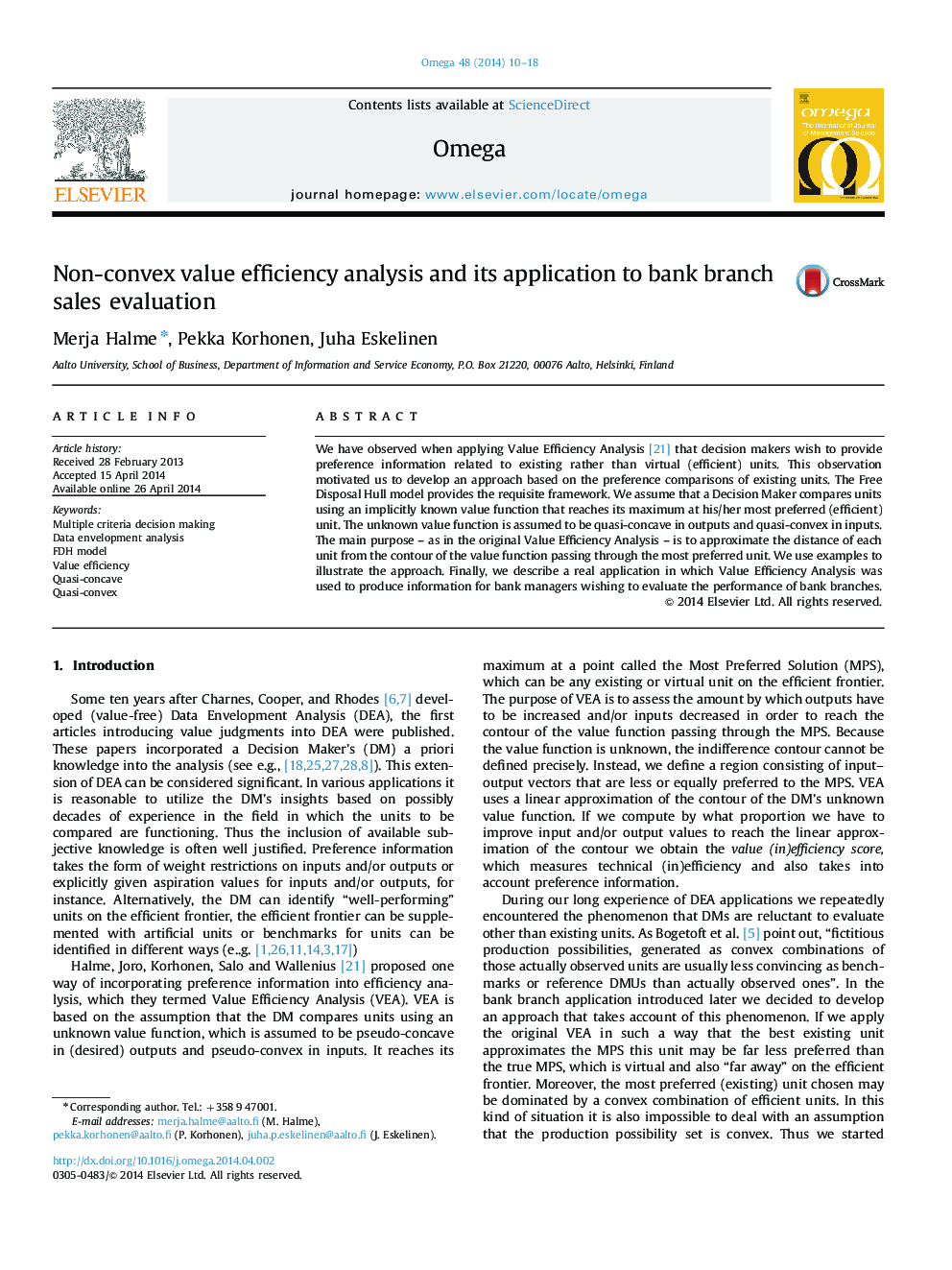| Article ID | Journal | Published Year | Pages | File Type |
|---|---|---|---|---|
| 1032685 | Omega | 2014 | 9 Pages |
•We develop a value efficiency approach for DEA to be used when the decision maker wishes to evaluate only existing units.•The approach uses the FDH framework and theory of convex cones.•We apply the approach in a joint project with a bank to analyze the sales efficiency of its branches.•The approach is the first that makes it possible to use preference information in the FDH model.
We have observed when applying Value Efficiency Analysis [21] that decision makers wish to provide preference information related to existing rather than virtual (efficient) units. This observation motivated us to develop an approach based on the preference comparisons of existing units. The Free Disposal Hull model provides the requisite framework. We assume that a Decision Maker compares units using an implicitly known value function that reaches its maximum at his/her most preferred (efficient) unit. The unknown value function is assumed to be quasi-concave in outputs and quasi-convex in inputs. The main purpose – as in the original Value Efficiency Analysis – is to approximate the distance of each unit from the contour of the value function passing through the most preferred unit. We use examples to illustrate the approach. Finally, we describe a real application in which Value Efficiency Analysis was used to produce information for bank managers wishing to evaluate the performance of bank branches.
